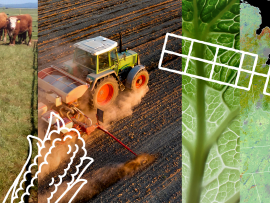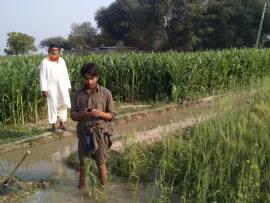Browse Freshwater Resources Resources
Browse Freshwater Resources Resources
Primary Topic:
Subtopics:
Type:
Summary:
NASA’s Earth observations have a significant impact on the food we eat and drink. The NASA At Your Table campaign creates awareness of the many ways in which these data are being used by a variety of stakeholders to help get food and drink to your table..
Primary Topic:
Subtopics:
Type:
Keywords:
Summary:
This My NASA Data lesson plan takes students through data from the GRACE satellite mission to help them understand where regions around the globe may experience a change in their freshwater availability.
Primary Topic:
Subtopics:
Type:
Keywords:
Summary:
Students will learn about how NASA’s Earth observing satellites are helping us better understand Earth’s freshwater resources and help farmers with agriculture.
Primary Topic:
Subtopics:
Type:
Keywords:
Summary:
Students will learn about how NASA’s Earth observing satellites are helping us better understand Earth’s freshwater resources and help farmers with agriculture.
Primary Topic:
Subtopics:
Type:
Keywords:
Summary:
Students will learn about how NASA’s Earth observing satellites are helping us better understand Earth’s freshwater resources and help farmers with agriculture.
Primary Topic:
Subtopics:
Type:
Keywords:
Summary:
Students will learn about how NASA’s Earth observing satellites are helping us better understand Earth’s freshwater resources and help farmers with agriculture.
Primary Topic:
Subtopics:
Type:
Keywords:
Summary:
The monsoon is a seasonal rain and wind pattern that occurs over South Asia (among other places). Through NASA satellites and models we can see the monsoon patterns like never before.
Primary Topic:
Subtopics:
Type:
Summary:
An educational brochure which explores the importance of fresh water to life on Earth and how NASA is monitoring and studying precipitation using satellites like GPM.
Primary Topic:
Subtopics:
Type:
Keywords:
Summary:
This lesson uses cubes as a way to graph precipitation data to compare the precipitation averages and seasonal patterns for several different locations. There are several variations to accommodate various ages and ability levels.
Primary Topic:
Subtopics:
Type:
Keywords:
Summary:
In this program, GPM mission scientists and education specialists talk about watersheds and related educational resources.










